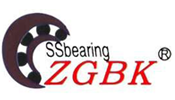Solution to the Noise of Rotating Speed Raceway of Stainless Steel Bearings for Pharmaceutical Machinery
The limited speed of rolling bearing is the allowable speed under certain load and lubrication conditions, which is related to many factors such as bearing type, size, load size and direction, lubricant type and lubrication method, clearance, cage structure and cooling conditions.
The factors affecting the speed include: load size, load type and direction, lubricant and lubrication mode. Experience has proved that improving the manufacturing accuracy of bearings, properly increasing the clearance of bearings, and using special materials and structural cages can also improve the limited speed of bearings.
The reasons for high bearing temperature are: the quality of lubricating oil does not meet the requirements or deteriorates, and the viscosity of lubricating oil is too high; The mechanism assembly is too tight (insufficient clearance); One way bearing assembly is too tight; The bearing race rotates on the shaft or in the housing; Excessive load; Broken bearing cage or rolling element, etc.
The rolling bearing is allowed to make a slight running noise during operation. If the noise is too loud or there is abnormal noise or impact, it indicates that the bearing is faulty.
The noise of rolling bearings is caused by complex reasons. One is the wear of the mating surfaces of the inner and outer rings of the bearings. As a result of this kind of wear, the matching relationship between the bearing and the housing, one-way bearing and the shaft is destroyed, which causes the axis to deviate from the correct position and produces abnormal noise when the shaft is moving at high speed. When the TIMKEN bearing is fatigued, the metal on its surface will peel off, which will also increase the radial clearance of the bearing and produce abnormal noise. In addition, the insufficient lubrication of the bearing, the formation of dry friction, and the crushing of the bearing will produce abnormal noise. After the bearing is worn and loosened, the cage is loose and damaged, which will also cause damage to the bearing with abnormal noise.
When the rolling bearing is disassembled for inspection, the fault and damage cause of the one-way bearing can be judged according to the damage of the bearing. The so-called pressure constant preload is the use of coil springs, disc springs, given the appropriate preparation method of bearing. In use, even if the relative position of the bearing changes, the method of pre loading.







